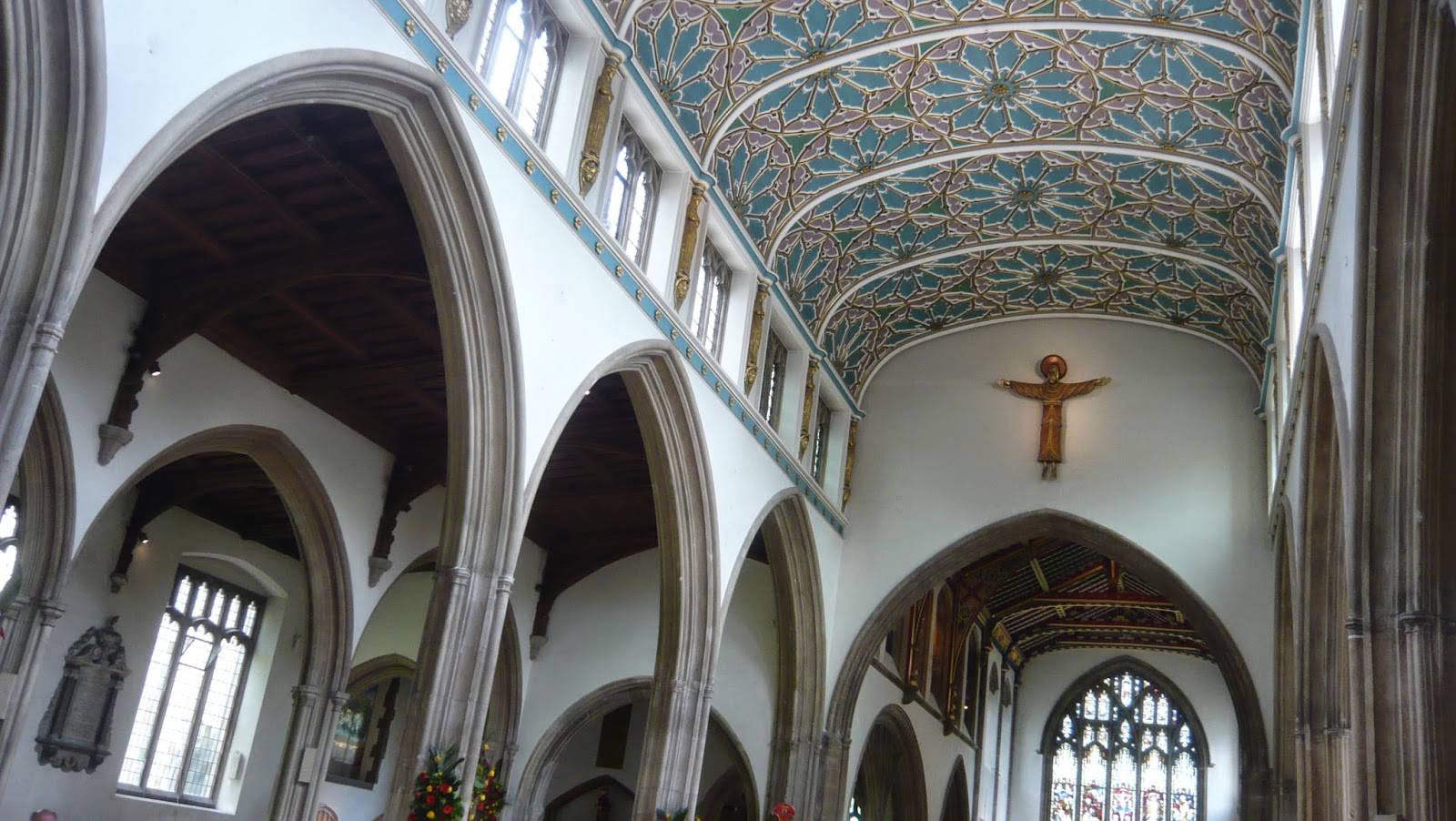I began my sabbatical art pilgrimage in familiar territory as Chelmsford Cathedral is where I was ordained as a deacon. Since then I have attended many Diocesan services, organised exhibitions and events, and have also spoken in the Cathedral on several occasions. Despite its familiarity for me, Chelmsford Cathedral continues to surprise and entrance.
On this occasion I was one of nearly 700 worshippers from across Essex and East London communities who joined Her Majesty The Queen and HRH The Duke of Edinburgh for a service to celebrate the centenary of Chelmsford Diocese. The Rt. Revd. Stephen Cottrell, Bishop of Chelmsford, said in his sermon:
"We bring good news. We sing the song of him before whom every knee must bow, and yet whose
‘coming alongside us and moving ahead of us’ gospel means, paradoxically, that he is the one who
kneels before us, who comes, if you like, as a servant, a slave, washes our feet, offers broken
bread, wipes every tear from every eye, longs for us to know that we matter, that we are loved,
that we are precious to God. He is King of Kings and Lord of Lords, and yet, at the same time, he
is servant and shepherd. He is light in the darkest hour. Hope in the bleakest despair. A reason for
going forwards, when everyone else turns back. He is joy. He is peace. He is love itself."
Those paradoxes are imaged in the range of artwork commissioned for this church over the 100 years that it has been a Cathedral.
Peter Eugene Ball and Mark Cazalet are two names that we will encounter again on this sabbatical art pilgrimage as they are among those contemporary artists who have most frequently been commissioned by the Church in the UK. Ball is a sculptor who works with found objects, predominantly wood, which he then embellishes with beaten metals such as gold leaf. His Christ in Glory located high above the Nave with its outstretched arms is a welcoming image.
On a smaller scale and possessed of a still serenity are his cross and candlesticks for the Mildmay Chapel and his Mother and Child in St Cedd's Chapel.
Cedd is the subject of Cazalet's engraved glass window in the St Cedd's Chapel and he also has a bit part in Cazalet's Tree of Life located in a blank window space within the North Transept and mimicking the mullions and tracery of the original window. The image of a single tree has been a recurring theme in Cazalet's work, influenced, as it is, by the sense of place found within the English Romantic landscape tradition. Cazalet's image of an Essex oak exemplifies lines written by his friend and fellow artist, Roger Wagner: "And that exulting love which made all things / Whose laughter is the ocean in a tree / That rustles like a thousand angels’ wings / Stirred by a wind no human eye can see."
Earlier commissions were no less significant however. Georg Ehrlich's sculpture The Bombed Child in St Peter's Chapel and his relief Christ the Healer are particularly affecting. The commissioning by the Church in the UK of work from artists who were refugees from the Nazi's will prove to be another recurring feature of this sabbatical art pilgrimage. Former Dean, The Very Revd. Peter Judd, said of The Bombed Child: "A mother holds her dead child across her lap, and the suffering and dignity of her bearing don’t need any words to describe them – that is communicated to anyone who looks at her."
The work of Thomas Bayliss Huxley-Jones also features elsewhere within the Diocese. His Woman of Samaria at St Peter's Aldborough Hatch and The Christ figure above the South Porch of St. Martin Le Tours church, Basildon are both fibreglass figures. At the Cathedral, Huxley-Jones' work includes a Christus in St Cedd's Chapel, a carving of St Peter on the south-east corner of the South Transept and 16 stone carvings representing the history and concerns of Essex, Chelmsford, and the Church. Similarly, in his sermon, Stephen Cottrell, spoke of "the faithful, tireless, tenacious, beautiful witness of Christian men and women continues to make a difference: in Chingford and Chelmsford, Harwich and Harlow, Becontree
and Basildon and Boxted, right across this complicated and glorious diocese."
Bishop Stephen concluded his sermon with these words: "In the midst of war, in the relative security of peace, in hardship and in plenty, in village, suburb and inner city, today we thank God for the church, which is the body of Christ, the sign of God’s loving presence and God’s eternal purposes for the world." The artworks found within this Cathedral Church are also signs of that loving presence and his eternal purposes for the world.
---------------------------------------------------------------------------------
John Ireland - Te Deum Laudamus.


















No comments:
Post a Comment